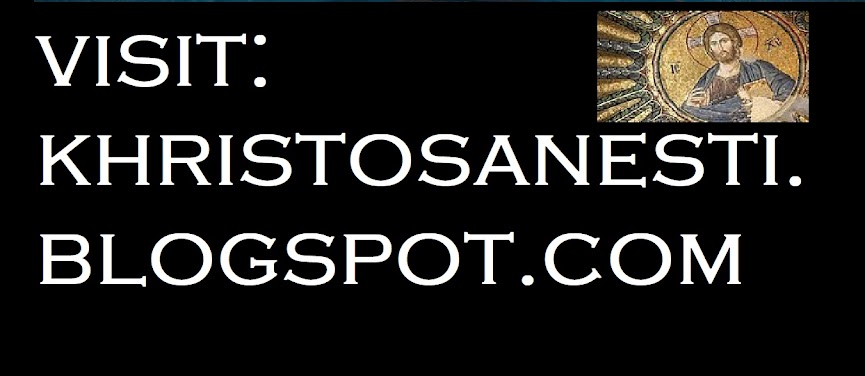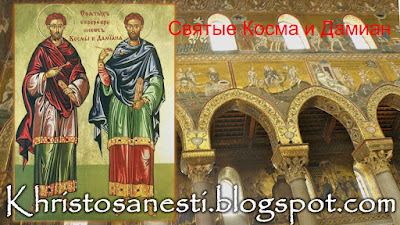Today our Church celebrates the memory of Holy Wonderworking Unmercenary Physicians Cosmas and Damian.
Holy Unmercenaries Cosmas and Damian were physicians and provided free services to everyone. Accepting no payment for their services led to them being named anargyroi (from the Greek Ανάργυροι, ‘the silverless’ or ‘unmercenaries’). They combined the medical knowledge with the true faith and philosophy of the Church. In return, they asked those they had cured to accept and confess the true faith in the crucified Jesus Christ.
Some, however, out of jealousy, defamed the two brothers to the emperor, who tried to persuade them to renounce the Savior Christ. Not only did they not renounce their faith, but by the grace of the Holy Spirit, they succeeded in persuading and converting the emperor himself to Christianity, since he accepted their services, with the result that both he and those present confessed their faith in Jesus Christ.
Later, after having earned glory and honor, Saints Cosmas and Damian were slandered by their teacher. Under the pretext of collecting herbs to make medicines, the Holy Unmercenaries were treacherously murdered by stoning by their teacher.
The outspokenness of the Holy Unmercenaries, as well as that of the modern Saint Luke of Simferopol, the physician, is great and admirable.
Let all the faithful turn to the grace of our saints, especially our modern doctors and health officials, in general, to give them courage in their precious work, offering their knowledge with respect, love, patience and selflessness to every suffering human being.
At the same time, let us all thank them and understand them because health officials are human beings, not superhumans.
-------------------------------------------------------
ESPAÑOL:
1 de Noviembre, San Cosme y San Damián.
La Iglesia celebra la memoria de los santos Apolonia y Mauricio y del mártir Constantino el Joven en Ormideia en Chipre, que se encuentra entre los trescientos santos que vinieron y vivieron en Chipre durante la Segunda Cruzada. El mártir Constantino predicaba el Santo Evangelio. Fue martirizado por su actividad cristiana y, con la gracia del Espíritu Santo, se convirtió en un hacedor de maravillas. Gracias a su gran fe en la gloria de Dios y al consuelo que ofrecía a los fieles, se construyó una iglesia dedicada a su memoria en la comunidad de Ormidia, donde se guarda su santa reliquia.







